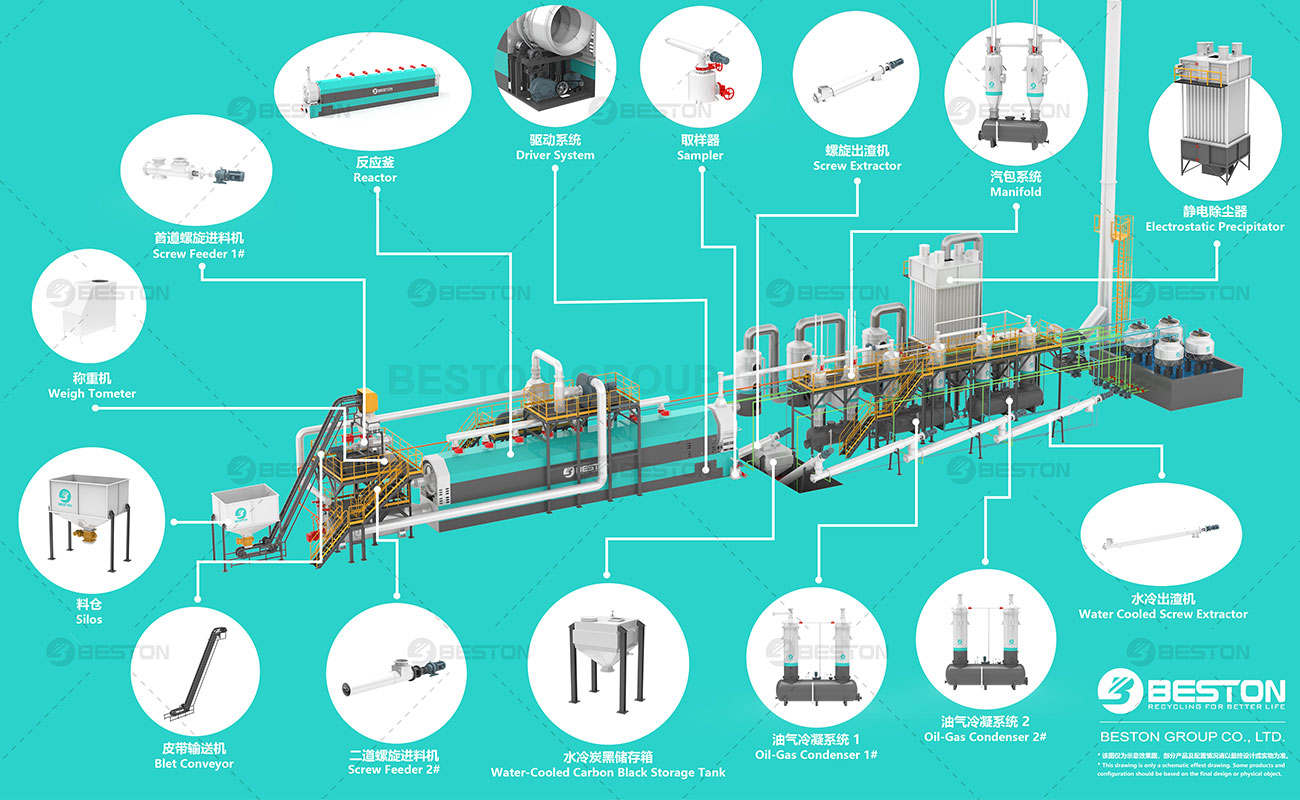Waste tyre pyrolysis technology is an innovative and promising solution for managing the growing problem of waste tyres. The process of pyrolysis involves heating waste tyres in the absence of oxygen, which breaks them down into useful byproducts such as carbon black, fuel oil, and steel wire. While this technology is gaining popularity as a way to reduce waste and create valuable products, it’s important to evaluate the economic feasibility before setting up a waste tyre pyrolysis plant.
Cost Analysis: Understanding the Investment
Setting up a waste tyre pyrolysis plant (máquina para reciclar neumáticos) requires a significant investment in capital and operating costs. Capital costs include expenses such as land, plant and equipment, and infrastructure. On the other hand, operating costs include raw materials, labor, utilities, and maintenance. It’s essential to evaluate these costs to determine the total investment required to get the plant up and running.

Revenue Streams: How to Make Money
The revenue streams for waste tyre pyrolysis plants come from selling the products produced by the process. Carbon black, fuel oil, and steel wire can all be sold and used for various applications. The market for these products can fluctuate, so it’s important to consider the pricing of these products when calculating the potential revenue for the plant.
Profitability Analysis: Is it Worth It?
The profitability of a waste tyre pyrolysis plant (¿Cuánto cuesta una planta de pirólisis en México?) can be evaluated by calculating the net present value (NPV) and internal rate of return (IRR). These financial metrics take into account the initial investment, operating costs, and revenue streams to determine the profitability of the plant. Sensitivity analysis can also be used to identify key variables that impact profitability, such as product pricing and plant efficiency.
Financing Options: Funding Your Plant
Setting up a waste tyre pyrolysis plant can be expensive, and there are several financing options available. Debt and equity financing are two of the most common financing options for this type of project. Debt financing involves borrowing money and repaying it over time with interest, while equity financing involves selling shares of the business to investors. A combination of both can also be used to finance the project.
Regulatory Considerations: Navigating the Requirements
Environmental regulations and permits are required for waste tyre pyrolysis plants (https://www.bestoneco.com/maquina-para-pirolisis-de-plasticos/), and these requirements can vary depending on the location of the plant. Compliance with these regulations can be costly, so it’s essential to evaluate the impact of regulations on the plant’s economic feasibility.
While evaluating the economic feasibility of setting up a waste tyre pyrolysis plant, it’s also essential to consider the long-term costs and benefits of the project. One of the benefits of a waste tyre pyrolysis plant is that it can help to reduce the amount of waste going to landfills, which can be expensive to maintain and harmful to the environment.
Moreover, the pyrolysis process also produces energy and other valuable products that can be sold, providing an additional source of revenue. The fuel oil produced by the plant can be used as a substitute for traditional fossil fuels, which reduces the dependence on non-renewable energy sources.
Overall, waste tyre pyrolysis technology has the potential to be an excellent solution for managing waste tires and creating valuable products. However, it’s essential to evaluate the economic feasibility before setting up a plant (recuperación de residuo de Beston Group). Capital and operating costs, revenue streams, profitability, financing options, and regulatory requirements are all factors to consider when making a decision about setting up a waste tyre pyrolysis plant. With a thorough evaluation of these factors, a decision can be made about whether to proceed with the project.